|

SAT NEWS - FESTIVALS AND EVENTS

Dear Travel Partner,
when you think of South America, one of the first images that comes to mind is probably of Rio's Carnival celebrations. Besides being among the biggest events in the world, they also have a spot on the bucket list of countless travelers.
But there are many other festivals and events taking place throughout the year and this month, we want to present some of them to you. Not only are they fun to attend, they also give a very special insight into a foreign culture, provide lots of opportunity to mingle with locals and are an ideal way to make the travel experience even more unique.
If you feel inspired and would like to know more about festivals and events during a certain time or in a specific country, contact us here and we will be happy to assist!
Enjoy reading and all the best,
your SAT Team
Follow us on Facebook, Instagram and Youtube for more news, products and impressions!
|
|
ECUADOR - PURPLE FROCKS AND CELEBRATED CORN
|
 |
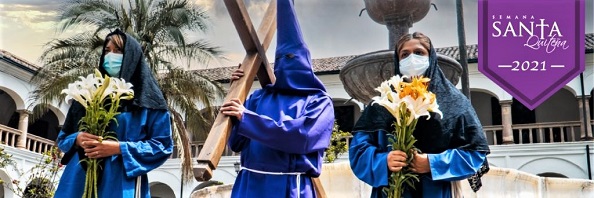
|
 |
|
 |
One of the biggest and most important events in Ecuador is
Semana Santa, Holy Week. Quito is the place to be during that time of the year because it goes all out with parades, celebrations and unique traditions. One of these traditions happens on
Palm Sunday, when worshippers
buy palm leaves and take them to church to be blessed. Afterwards, they bring them home where the palm leaves are said to protect the family. In case something bad does happen, the palm leaf is burned so the blessed smoke can ward off evil. The following Wednesday is
"El Arrastre de Caudas", which is based on an
ancient Roman funeral ritual. A black cloth was used to first cover the body of a fallen general and then pass over the troops to impart the general's wisdom and bravery. Likewise, a black cloth is spread over worshippers to honor Christ as a fallen hero. On
Good Friday, you can witness the 4-hour long parade "Procesión Jesús del Gran Poder" in the historic center. It represents Christ's path to crucifixion and includes a life-size Jesus doll as well as marching bands and participants dressed as Roman soldiers or even Jesus himself, complete with wooden crosses. The most eye-catching costume however is the
"cucurucho", a purple gown with a cone-shaped hood. In colonial times, Christians would remain in front of churches, dressed in cucuruchos and subjected to the elements, to show penitence for their sins. Nowadays, hundreds of men in that particular gown join the parade while women traditionally dress up as "veronicas", symbolizing the woman who wiped Christ's face on the way to crucifixion. For travel ideas including Quito's Easter celebrations and more festival ideas, please
contact us!
Picture credit: www.quito-turismo.gob.ec |
 |
|
 |
|
Every
September the town of Otavalo, famous for hosting South America's biggest handicraft market, celebrates the
Fiestas del Yamor (Yamor Festivities). The popular festival is a blend of Kichwa and Catholic customs to celebrate harvest and fertility. The name of the festival is based on a traditional drink brewed with seven types of corn. It is very similar to chicha but unique to the region of Otavalo. Not only is corn a staple crop of the region, it also symbolizes fertility in Kichwa beliefs. The festival honors Otavalo's Catholic patron virgin Nina Maria as well as Pacha Mama (Mother Earth) with
elaborate dresses, music and dancing, processions and fireworks. There are also wooden cart races and a swimming race in the nearby San Pablo Lake.
|
|
PERU - INCAN AND CHRISTIAN RELIGION BACK TO BACK
|
 |
One of Peru's biggest festivals is
Inti Raymi, the most important celebration of the ancient Incan empire. Besides honoring the
sun god Inti, it also marks the
start of the New Year. The festival traditionally took place in Cusco on the day of the winter solstice and the festivities included gifts, sacrifices, dances and music. Inti Raymi was banned in 1572 by the Spanish Crown who tried to abolish local religions and implement Christianity instead. Around 400 years later, in 1944, a
historical reenactment of the religious ceremony was created based on original documents, which evolved into an annual theatrical representation on June 24th. Today's Inti Raymi is a huge affair involving thousands of actors who reproduce ancient rituals in different sites. The day includes morning ceremonies at the sun temple Korikancha and the main square Plaza de Armas, before moving to the ruin site Sacsayhuaman just outside the city. A 1.5h long play tells the origin story of the Incan empire, including the defeat of pre-Inca civilizations and
their merging into one, the coronation of the Inca ruler by the huillaqhuma (priest) and a ceremony honoring the sun god Inti. The play is followed by performances of regional dances. After the official part of the festival ends, the dancers and musicians return to Cusco's main square to continue the celebrations. Inti Raymi provides an exciting, colorful and impressive insight into the ancient Inca culture and visitors will leave with memories that last a lifetime. And more good news: this year, the available tickets are back to 100% of the total capacity! Click here to learn about the details of participation and request travel ideas! |
|
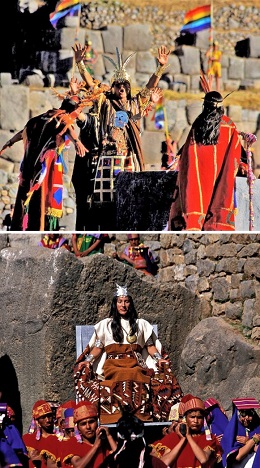 |
 |
|
 |
|
Shortly before Inti Raymi, Cusco celebrates the Christian holiday
Corpus Christi. While there are festivities throughout Peru, the former Inca capital hosts the most elaborate event by far. Local parishes take their richly adorned statues of ten saints and five virgins to the Cathedral of Cusco in walking processions. On the day of Corpus Christi, the
main procession starts at 11:00am. The statues are paraded around the main square Plaza de Armas, accompanied by
singing groups, marching bands and parishioners. The end of the parade is marked by "La Carroza", a temple-shaped wood construction covered in silver. After the parade, the saints are taken inside the Cathedral, where they stay for seven days before travelling back to their parishes.
|
|
URUGUAY - THE WORLD'S LONGEST CARNIVAL AND GAUCHO TRADITIONS
|
 |
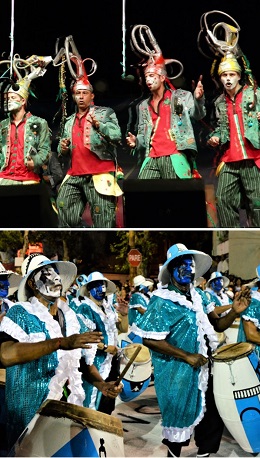 |
|
Did you know that Uruguay celebrates
one of the longest Carnivals in the world? For
40 days between late January and early March, there are
parades, concerts and parties combining European and Afro-Uruguayan traditions. Festivities are most vibrant in the capital Montevideo: They begin with a street parade and end with a closing event at an open-air stage where the different carnival disciplines are awarded. In between there are a number of other events and activities, many unique to Uruguay. The main pull for the locals are the
"Murgas" and the
"Llamadas", two very important local traditions. Murgas are bands of musicians, usually in costume, who satirize current political and social situations or everyday-life occurrences. They take place in major venues such as the Teatro de Verano as well as social clubs and street stages all across the city. The Desfile de Llamadas is another great reason to visit Montevideo's carnival. This hugely popular drum parade features around 40 carnival groups of drummers and dancers performing the drum-based Afro-Uruguayan music known as Candombe. There are also performances of Samba schools that
originated from the famous Carnival of Rio de Janeiro and became a fixture of the festivities in Uruguay. To complete the Carnival experience, how about a visit to Montevideo's Carnival Museum? It is dedicated to the fascinating history of the popular festival and can be visited all year round. For guests staying in Buenos Aires, this is the perfect opportunity to catch the ferry to Uruguay and soak up some festival spirit. Contact us now for program
ideas to visit next year's celebrations!
Picture credit: Intendencia de Montevideo, Artigas Pessio |
 |
|
 |
|
During Easter, Montevideo celebrates
Semana Criolla, Gaucho Week. It is a very traditional and authentic event that is not regularly frequented by tourists. Gauchos from Uruguay as well as the neighboring Argentina, Brazil and Chile show off their riding skills in performances known as jineteadas. In the evening, there is live music and performances of local artists. Sale stalls offer a variety of products, such as delicious country-style food, handcraft, riding gear and traditional gaucho clothing. The festival is held in the agricultural expo venue Rural del Prado, located only 10-15 minutes by taxi from the city
center.
|
|
BRAZIL - OPERA IN THE JUNGLE AND BRAZIL'S NATIONAL LIQUOR
|
 |
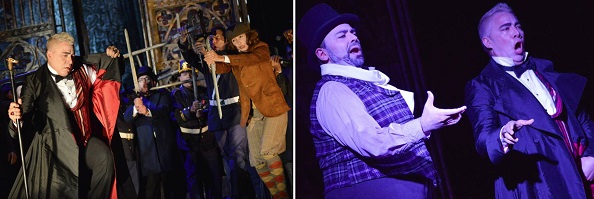
|
 |
|
 |
If you have looked into the Brazilian Amazon region, you cannot miss the
spectacular opera house in Manaus, Teatro Amazonas. With its pink and white façade and the giant dome plastered with 36,000 ceramic tiles in the colors of the Brazilian flag, it is the most impressive architectural sight in the city. The theater's in-house orchestra in known as the Amazonas Philharmonic. The Teatro Amazonas organizes one of the most important cultural festivals in the country, the
Festival Amazonas de Ópera (Amazonas Opera Festival). It was created in 1997 and is held
annually between March and May. During the festival, selected opera pieces are brought to life, smaller theaters, community centers and schools in Manaus organize their own performances and there are live concerts as well as master classes and conferences for artists and technicians. The festival often premieres operas that are new to Brazil, including Lulu by Alban Berg, Magdalena by Heitor Villa-Lobos or, most famously, the complete cycle of Wagner's Ring of the Nibelung. Also known as the "Ring Cycle", it consists of four epic music dramas with a total playing
time of approximately 15 hours. Other classic titles featured at the festival include Puccini's Madame Butterfly or La Traviata by Giuseppe Verdi. What better way to make a stay in the Brazilian Amazon region even more special than a night at the opera? Please contact us for more information and travel ideas!
Picture credit: XXI FAO, Michael Dantas/SEC |
 |
|
 |
|
Since 1982, the Festival da Cachaça, Cultura e Sabores (Festival of Cachaça, Culture and Flavors) is held in Paraty, a coastal town located approximately 4 hours from Rio de Janeiro. For
4 days in August, a selection of distilleries will present their products for sale and offer tastings. Food stalls provide delicious local refreshments that go perfectly with cachaça. The festival also hosts musicians who are either from Paraty or have a special connection to the city. They perform a variety of styles, including pagode, forró and samba, but also rock or reggae.
|
|
CHILE - VIÑA MUSIC FESTIVAL AND CHILOE TRADITIONS
|
 |
The Festival Internacional de la Canción de Viña del Mar (Viña del Mar International Song Festival) is not only Latin America's largest music festival, with its first edition in 1960 it is also one of the longest running festivals in the world. It takes place the
third week of February in the beautiful coastal city Viña del Mar, not far from Santiago de Chile. The festival's lineup features both
local and international artists from a variety of genres, including big names such as Elton John, Ricky Martin, Lionel Ritchie or Maroon 5. During the festival,
two song competitions are held in the segments pop and folk music. Inscriptions are open to international participants and while the folk contest was won exclusively by Latin American artists (most of them from Chile), the winners of the pop contest are from all over the world, including Canada, Iceland, Italy and Spain. Each year, a vote by the local newspaper La Cuarta crowns a
festival queen. The participants are international personalities from popular industries such as music or film and winners include actress Sofía Vergara and singer Celía Cruz. A day-ticket for the 6-day festival is a fun addition to a Chile adventure and can be included in the itinerary as a day tour from Santiago de Chile. Click here to request more information!
Picture credit: Agencia Uno |
|
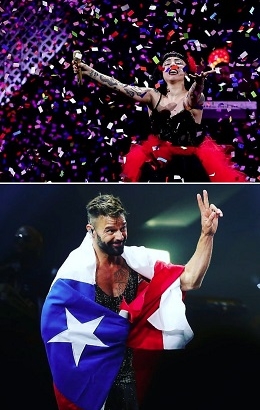 |
 |
|
 |
|
During the summer months in southern Chile, namely January and February, many communities celebrate their heritage, customs and traditions in
Fiestas Costumbristas. One of the largest is the
Chilote Costumbrista Festival in Chiloé, an island in Chile's lake region. The
third weekend of February is dedicated entirely to celebrating Chiloé's traditional culture with typical dishes, music and dances, artisan exhibitions and performances of riding skills as well as chores of the rural life. The festival was first introduced in 1979 and has evolved into the region's largest and most important event.
|
|
ARGENTINA - TANGO AND A LATINO OKTOBERFEST
|
 |
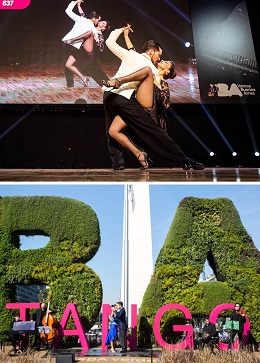 |
|
The poet and songwriter Horacio Ferrer wrote that Buenos Aires is "a tangopolis... tango is a way of walking before it is a dance, a way of talking before it is sung, a way of dreaming first and later poetry." During no other time is this "tangopolis" more palpable than during the Tango BA Festival y Mundial. One of the world's biggest Tango events, the combination of festival and world championship takes places
annually in August or September. It attracts hundreds of thousands of visitors who attend or actively participate in
concerts, shows, dancing classes, milongas, conferences and presentations. But the main event is the big Tango competition that is open to both professionals and amateurs from all over the world. Hundreds of couples will compete in two categories, Salon and Stage Tango. The big highlight of the festival is the final dance of the World Cup's winning couple. Visiting Buenos Aires during that time of the year is a special experience even for unseasoned dancers, who will find themselves swept away by the sultry rhythm of Tango. To find out more about the festival and how to incorporate
it in your Argentina programs, please
contact us!
Picture credit: turismo.buenosaires.gob.ar |
 |
|
 |
|
Germany's traditional Oktoberfest has fans all over the world and several countries with large German communities have created their own versions. The
biggest Oktoberfest in Latin America is celebrated in
Villa General Belgrano, a small town outside of Córdoba. It was introduced in 1964 and has been growing in popularity ever since. In 1972, it was even declared a national festival, specifically the
Festival Nacional de la Cerveza (National Beer Festival). Around 30 bands provide traditional German music, there are parades, folkloric dances and of course a lot of German food and artisanal beer. But the main event is the traditional tapping of the first beer barrel to officially start the festival.
|
 |
|
 |

|
 |
|
 |
South American Tours - Global Sales Office
South American Tours GmbH | Kaiserstr. 23 | 60311 Frankfurt am Main | Germany
Phone: +49 (0) 69 4058970 | Fax: +49 (0) 69 40589799
Mail: sales@southamericantours.com | www.southamericantours.com
South American Tours - Sales Office North America
Mail: sales-america@southamericantours.com
South American Tours - Sales Office Italy
Mail: sales.italy@southamericantours.com
Copyright © South American Tours 2012-2022
Imprint
South American Tours de Uruguay Agencia de Viajes S.A. | Buenos Aires 618, Piso 2, Oficina 201 | 11000 Montevideo | Uruguay
Tel.: +59 82 91 60 050 | Fax.: +59 82 91 55 406 | E-mail: info@southamericantours.com
Managing Director: Federico Büker | Registered Office: Montevideo | Local Court: Montevideo | Commercial Register: 1194 (Ministry of Tourism) | VAT identification no.: 215224020014

|
 |
|
Protection of data privacy and cancellation of the subscription:
This message has been sent to 10063. If you do not want to receive mails in the future you can unsubscribe by clicking
here.
|
|
|
 |
|
 |
 |
|
|